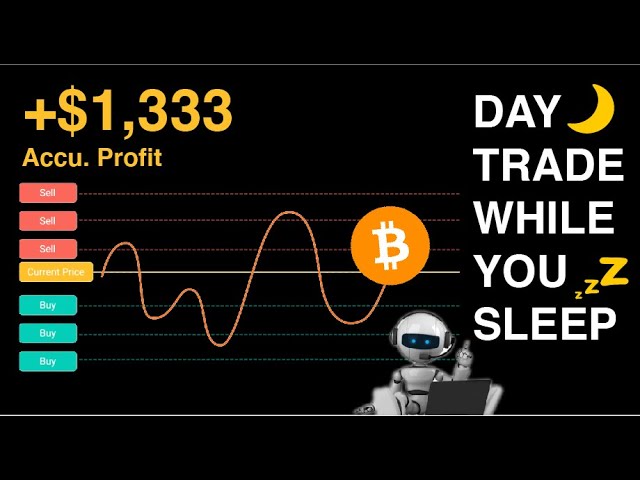Did you know that some day trading bots can execute trades faster than a cheetah chasing its prey? This article dives into the world of day trading bots, exploring what they are and how they operate. We’ll uncover whether these bots can guarantee profits, the factors that influence their success, and how to select the best one for your trading style. For beginners, we clarify their suitability and discuss the risks involved. Additionally, we'll compare day trading bots to manual trading, highlight the strategies they employ, and examine their adaptability to market changes. Learn about the costs, successful case studies, and the best platforms available. Finally, we provide tips on optimizing performance and avoiding common pitfalls, all while considering the impact of regulations and user reviews. Join us at DayTradingBusiness for expert insights on maximizing your trading potential!
What are day trading bots and how do they work?
Day trading bots are automated software programs that execute trades in financial markets based on pre-set algorithms. They analyze market data, identify trading opportunities, and make buy or sell decisions without human intervention.
Their profitability depends on factors like market conditions, the effectiveness of the trading strategy, and risk management. Some bots can be profitable by capitalizing on small price movements, while others may incur losses if the strategy is poorly designed or if market volatility is high. Ultimately, success varies by bot and user.
Can day trading bots guarantee profits?
No, day trading bots cannot guarantee profits. While they can analyze data and execute trades quickly, market conditions are unpredictable. Factors like volatility, news events, and human emotion play significant roles in trading outcomes. Bots may improve efficiency but come with risks and do not ensure consistent gains.
What factors influence the profitability of day trading bots?
The profitability of day trading bots depends on several key factors:
1. Algorithm Quality: The sophistication of the trading algorithms determines their effectiveness in predicting market movements.
2. Market Conditions: Volatility and overall market trends significantly impact the bot’s performance. Bots thrive in volatile markets but may struggle in sideways markets.
3. Data Accuracy: Access to real-time and accurate data influences decision-making. Inaccurate data can lead to poor trades.
4. Risk Management: Effective risk management strategies can protect against significant losses and enhance profitability.
5. Trading Fees: High transaction costs can erode profits, making it crucial to choose a platform with low fees.
6. Customization: The ability to tailor settings and strategies to specific trading goals can improve outcomes.
7. Backtesting: Bots that have been thoroughly backtested on historical data tend to perform better.
8. Market Adaptability: The bot’s ability to adapt to changing market conditions impacts its long-term profitability.
These factors combined determine whether a day trading bot can yield consistent profits.
How do I choose the best day trading bot for my needs?
To choose the best day trading bot, assess your trading strategy, risk tolerance, and desired features. Look for bots with a proven track record, robust backtesting capabilities, and positive user reviews. Ensure the bot supports your preferred trading pairs and has a user-friendly interface. Check for customization options to align with your trading style. Finally, consider the bot’s fees and customer support.
Are day trading bots suitable for beginners?

Day trading bots can be suitable for beginners, but they come with risks. They automate trades and can execute strategies quickly, which may be beneficial for new traders. However, beginners must understand the market and the bot's strategy to avoid significant losses. Relying solely on bots without proper knowledge can lead to poor outcomes. It's essential to start with research and perhaps paper trading before using real money.
What are the risks associated with using day trading bots?
Day trading bots can be risky due to several factors. They rely on algorithms that can misinterpret market signals, leading to poor trading decisions. High volatility can result in significant losses if the bot doesn't react properly. There's also the risk of technical failures, such as server outages or software bugs, which can cause missed trades or erroneous transactions. Additionally, market conditions can change rapidly, and bots may not adapt quickly enough, resulting in lost opportunities or increased losses. Lastly, over-optimization can lead to bots performing well in backtesting but failing in real-time trading.
How do day trading bots compare to manual trading?
Day trading bots can be profitable, but their success depends on market conditions, strategies, and the quality of the algorithms. They execute trades faster and can analyze data continuously, which gives them an edge in volatility. However, manual trading allows for human intuition and adaptability, which bots lack. While bots can remove emotional decision-making, they also risk significant losses if not properly monitored. Ultimately, combining both approaches might yield the best results.
What strategies do day trading bots use to make money?
Day trading bots make money through several strategies:
1. Arbitrage: They exploit price differences between exchanges, buying low on one platform and selling high on another.
2. Market Making: Bots provide liquidity by placing buy and sell orders close to the market price, earning the spread between them.
3. Trend Following: They analyze market trends and execute trades based on momentum, buying in uptrends and selling in downtrends.
4. Mean Reversion: Bots identify when asset prices deviate from their historical averages and trade on the assumption that prices will revert back.
5. Technical Analysis: Using indicators like moving averages and RSI, bots make trades based on patterns and signals derived from price data.
6. News-Based Trading: Some bots react to news events, executing trades based on real-time sentiment analysis.
These strategies can be profitable, but success depends on market conditions and the bot's algorithm efficiency.
Can day trading bots adapt to market changes?
Yes, day trading bots can adapt to market changes using algorithms that analyze real-time data and adjust strategies accordingly. However, their profitability depends on the effectiveness of the algorithms, market conditions, and the bot's ability to learn from past trades. Consistent monitoring and updates are essential for maintaining their performance over time.
How much does it cost to use a day trading bot?

The cost of using a day trading bot varies widely. You can find free options, but paid services typically range from $20 to $300 per month. Some advanced bots may require a one-time purchase of $1,000 or more. Profitability depends on the bot's performance, market conditions, and your trading strategy. It’s essential to research and test any bot before committing financially.
Learn about How to Use Market Microstructure Data to Improve Day Trading Outcomes
Are there any successful case studies of day trading bots?
Yes, there are successful case studies of day trading bots. For instance, the bot "Cryptohopper" has shown profitability by leveraging algorithms to analyze market trends and execute trades rapidly. Another example is "3Commas," which uses smart trading tools to optimize trades across various exchanges, helping users achieve consistent gains. Additionally, some users of "Trade Ideas" report significant profits by utilizing its AI-driven stock market analysis. These bots have enabled traders to capitalize on market volatility effectively.
Learn about Case Studies of Successful Day Trading Scalpers
What are the best platforms for day trading bots?
The best platforms for day trading bots include MetaTrader 4/5, TradingView, NinjaTrader, and Alpaca. These platforms offer powerful tools for automation and integration with various trading strategies. Profitability depends on the bot's algorithm, market conditions, and user strategy. Always test bots with a demo account before live trading to gauge effectiveness.
Learn about What Are the Best Resources for Learning Day Trading Bots?
How can I optimize my day trading bot's performance?
To optimize your day trading bot's performance, focus on these key areas:
1. Strategy Refinement: Test and tweak your trading strategies regularly. Use backtesting to identify profitable patterns.
2. Risk Management: Implement stop-loss and take-profit orders to protect capital. Adjust position sizes based on volatility.
3. Market Conditions: Tailor your bot to adapt to different market environments. Use indicators that signal trend changes.
4. Data Analysis: Analyze historical data and incorporate machine learning to improve predictive capabilities.
5. Execution Speed: Ensure your bot has low latency and executes trades quickly to capitalize on market movements.
6. Continuous Monitoring: Regularly monitor performance metrics and adjust algorithms as needed based on real-time results.
7. Diversification: Trade multiple assets or strategies to spread risk and enhance potential returns.
These steps can significantly enhance the profitability of your day trading bot.
Learn about How Do I Optimize My Day Trading Bot’s Performance?
What common mistakes should I avoid with day trading bots?
Avoid these common mistakes with day trading bots:
1. Over-reliance on Automation: Don’t assume bots will always make profitable trades; monitor their performance regularly.
2. Neglecting Backtesting: Failing to thoroughly backtest strategies can lead to unexpected losses. Always test with historical data.
3. Ignoring Market Conditions: Bots can struggle in highly volatile or unusual market conditions. Stay informed about market trends.
4. Setting Unrealistic Expectations: Expecting consistent profits can lead to disappointment. Understand that losses are possible.
5. Poor Risk Management: Never risk more than you can afford to lose. Set stop-loss limits and position sizes carefully.
6. Not Updating Algorithms: Markets change, so your bot's algorithms may need adjustments. Regularly review and update strategies.
7. Choosing the Wrong Bot: Not all bots are created equal. Research and select a bot that aligns with your trading style and goals.
By avoiding these pitfalls, you can improve your chances of success with day trading bots.
Learn about Common Mistakes in Day Trading Analysis to Avoid
How do regulations impact day trading bots and their profitability?
Regulations significantly impact day trading bots and their profitability by imposing restrictions on trading practices, data access, and capital requirements. These rules can limit the strategies bots can employ, affecting their ability to execute trades quickly and efficiently. Compliance costs may also eat into profits. Additionally, regulations aimed at preventing market manipulation can restrict certain high-frequency trading tactics that bots often use. Overall, while regulations can enhance market fairness, they can also reduce the potential profitability of day trading bots.
Learn about How Do Prop Firms Impact Day Trading Profitability?
What are user reviews saying about day trading bots?
User reviews of day trading bots often highlight mixed experiences. Some traders report profitability, citing ease of use and automated strategies that capitalize on market trends. Others express frustration with losses, mentioning that bots can struggle in volatile markets or require constant monitoring. Overall, while some users find success, many emphasize the importance of understanding market dynamics and not relying solely on bots for trading decisions.
Learn about What Are the Most Common Myths About Day Trading Bots?
Conclusion about Are Day Trading Bots Profitable?
In conclusion, while day trading bots can offer potential profitability, they are not a guaranteed solution for success. Factors such as market conditions, strategy selection, and individual trading goals play crucial roles in their performance. As you explore the world of automated trading, consider the insights shared here. For further guidance and tailored advice, DayTradingBusiness remains a valuable resource to help you navigate your trading journey effectively.